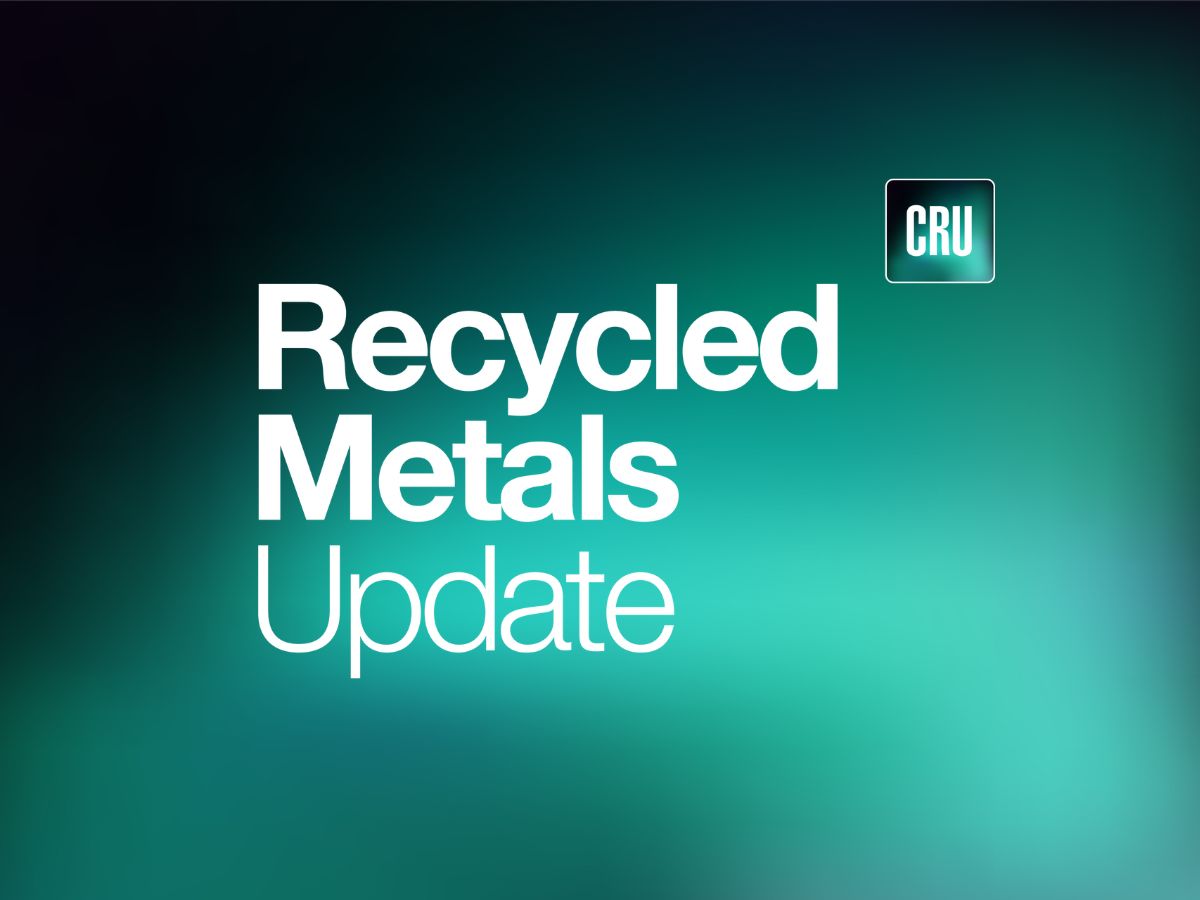Scrap Processors

August 6, 2024
Meir: Markets, commodities and the outlook for August
Written by Edward Meir
Edward Meir of Commodity Research Group provides a monthly market commentary for Marex. The following is a summarized version of his commentary, tailored to the interests of the recycled metals industry.
Is the current recession hysteria warranted?
Probably not, if one recalls the famous adage that the U.S. stock market has predicted nine of the last five recessions. But more seriously, we think some of the recent data has exogenous variables that is making the numbers worse than they are. For example, Hurricane Beryl made landfall in Texas July 8, the start of when the Labor Department typically collects its payroll data. Some 2.7 million homes and businesses in the Houston-area were without power for days, but oddly, the Labor Department said this was not a meaningful variable in its report.
But it was.
Initial claims surged in the wake of the storm as apparently 461,000 people with jobs were unable to go to work for weeks on end. By way of comparison, the average number of people missing work because of weather over the previous ten Julys was 37,000 — less than a tenth of what we saw this month. So the August jobs data could see a rebound as these anomalies correct.
Moreover, the rise in the unemployment rate was due to more people entering the labor force and not because of layoffs.
On the manufacturing side, although the ISM data was weak, June factory orders, ex-transports were decent, mirroring the similarly stable June durable goods reading. Some of the regional readings have also been better in recent weeks as well.
The Q2 GDP report out in late July (up 2.8% for the quarter) pointed to strong consumer and business spending. Consumer spending increased at a 2.3% rate after slowing to 1.5% in Q1. Consumer sentiment readings ticked higher in recent weeks as well, while the latest consumer credit reading for May came in at $11 billion, ahead of estimates and almost double April levels. On the investment side, GDP data showed nonresidential fixed investment (spending on commercial construction, equipment and software) rising at a 5.2% rate versus 1.6% in Q1.
Finally, we should not underestimate the impact of lower interest rates on revving up U.S. growth going into the 2nd half of the year. If the market gets at least 1%-1.5% in rate cuts by year-end, we could see some revival in the lackluster U.S. housing market as people will be in a position to transact and move. This should increase housing supply and cool off the relentless price increases, while leading to increased remodeling and reconstruction as well (both good for metals). Lower rates will also trigger refinancing, both by consumers and businesses.
Outlook for August
In the base metals group, we were moderately bearish on the group going into July but admittedly did not see the more sizable decline that set in over a number of metals last month. We remain bearish going into August as we suspect that the weakness in U.S. equity markets and recession fears will be an ongoing source of downward pressure for most commodity markets, at least until these concerns start to dissipate. Moreover, August is traditionally a slow month demand-wise, and so excess metal supply will weigh more on the market than it normally does.
We were bearish on the U.S. HRC market going into July, but did point out that we could run into some support around the critical $30/CWT level, which seems to have transpired. Having said that, we suspect that we will trade in a sideways fashion for a little while longer.
U.S. equity markets are going to be rocky for a while. Investors have to decide whether the U.S. economy is heading into a recession or not, as that will have a notable impact on earnings. We do not see a recession on the horizon, but the markets are clearly thinking otherwise. The most important release will be the July service sector ISM reading where expectations are calling for a rebound to 51.0 after June’s unexpected slide to 48.8 and that could allay some off the recession talk. But more importantly, the sharp fall we have seen in U.S. interest rates, coupled with the recent slide in oil prices, should be constructive for equities, especially once the current panic subsides.
Copper
In July, copper prices declined by about 4.5%, the second consecutive monthly decline and the worst July since 2018. Despite this, copper is still up 7% for the first seven months of 2024, making it the second-best performer among the LME metals, trailing only tin. Prices started the month on a positive note, setting a high of $10,000/ton July 5, short of our projected ceiling of $10,450. They then sold off sharply, to a low of $8,900/ton on July 25, well below our projected low of $9,700 and continue to plunge as of this writing Monday, Aug. 6. During August, we see copper ranging between $8,400-$9,100/ton as more long liquidation sets in before we see some potential stabilization later in the month.
Aluminum
Apart from a brief push higher early in July, aluminum prices collapsed over the course of the month, getting to a 4-month low in the process after shedding nearly 11% on the month. The high on the month was reached July 3 at $2,561/ton, while the low was made on July 30 at $2,290/ton. Our forecast range of $2,420-$2,650 was way off the mark as we failed to appreciate the overwhelmingly bearish sentiment that engulfed LME metals this past month.
Global primary aluminum output in June rose 3.2% year-on-year to 5.94 million tons, this according to the IAI. Against this rather comfortable supply situation, the aluminum market is faced with slowing demand ex-China, particularly as reflected by key PMI readings — these are all in contraction mode, practically the world over.
Here in the U.S., the July ISM number out last week was particularly disappointing, coming in at an eight-month low of 46.8. The subdued tone in ali prices during July has kept physical premiums relatively steady. Here in the U.S., Midwest held $0.18/lb. for much of the month before creeping over $0.19 on Friday. We suspect the steady tone in premiums will remain in place going into August (on both sides of the Atlantic) as producers will seek to hold the line against falling flat prices. For August, we see ali prices trading between $2,145-$2,320.
NYMEX HRC
It has been a dreadful month in the U.S. HRC market, as prices continue to erode. In the first few days of August, we have seen a slight pick-up, but the selling seems to have resumed on Friday amid the general selloff we saw in most markets.
In its latest earnings call, Nucor said that U.S. steel activity has softened amid weaker demand and an increase in imports, but Nucor nevertheless claims that it sees U.S. end markets as healthy, citing future spending in semiconductors, data centers, healthcare facilities, and energy and infrastructure. While this may be true, it has certainly happened to the degree to push steel prices higher. Instead, the opposite is happening.
Depressed pricing is also trimming the amount of steel imports coming into the U.S. These fell to their lowest level of the year in June, according to the International Trade Administration. All in all, the U.S. imported 1.95 million tons of steel in June, down from 2.59 million in May and off from 2.54 million tons in June 2023. The top three exporters were Canada, Brazil and Mexico, but all three reported month-on-month declines of 2.5%, 31% and 32%, respectively, in June.
Meanwhile, various steel mills, including Cleveland Cliffs, Nucor, North American Stainless and Steel Dynamics along with the United Steelworkers Union, gathered at Capitol Hill last month, urging legislation to curb unfair trade practices. The legislation before Congress includes the “Leveling the Playing Field Act” aimed mainly at China and the loopholes and subsidies Beijing is utilizing to promote its steel exports.
One action that the Biden administration did take last month was to apply new tariffs to steel and aluminum shipments diverted through Mexico. The measure would apply 25% tariffs to steel arriving from Mexico that was not melted and poured in that country, the U.S. or Canada.
Bloomberg notes that the U.S. imported about 3.8 million tons of steel from Mexico in 2023, 13% of which came from outside North America and so we don’t think this will necessarily sideline a large amount of tonnage. Nevertheless, importers will now have to provide documentation to U.S. customs about the source of their imports if they want to avoid tariffs.
In conclusion
The commodity markets are under pressure, and that is sure to ripple through the recycled metals industry as stocks navigate volatility. Prices have been eroding. However, there are some nuances here that could bode well for the sector. For instance, a drop in interest rates would bolster construction and manufacturing, spurring the need for scrap. Money also would be cheaper for businesses looking to refinance debt. It will be important to monitor unemployment, manufacturing and GDP data in the coming months.





